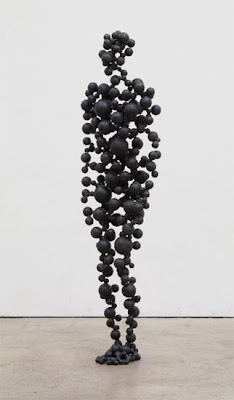Spotted Lump, 2005
screen printed paper
53 x 56 x 59 cm

White Paper Pile
2003

Multi Coloured Spiro, 2003
Ink on Gesso Panel
Spotted Lump, 2005
screen printed paper
53 x 56 x 59 cm

White Paper Pile
2003

Multi Coloured Spiro, 2003
Ink on Gesso Panel





Aitken’s body of work ranges from photography, sculpture, and architectural interventions to films, sound, single and multichannel video works, and installations. He has described his work as "reflecting a world that is harmonious, mysterious, mesmerizing, passionate, and sometimes rough and violent." His work has been featured in numerous solo and group exhibitions around the world, in such institutions as the Whitney Museum of American Art, The Museum of Modern Art and the Centre Georges Pompidou in Paris.


 Breeze, 1991
Breeze, 1991
aluminium
300 cm

Swirl sculpture
30ft (10m) high

Mark Jenkins (b. 1970 in Fairfax Virginia) is an American artist most widely known for the street installations he creates using box sealing tape. His work has been featured in various publications including Time, The Washington Post, Reuters, The Independent and on the street art blog Wooster Collective. He has shown indoors in galleries in the U.S., Europe, Japan and Brazil and is represented by various galleries including Lazarides Gallery in London. He maintains the Website tapesculpture.org and teaches his tape casting process in workshops in the cities he visits.
Mark Jenkins said the following about the illegal aspects of street art during an interview with art critic Brian Sherwin "There is opposition, and risk, but I think that just shows that street art is the sort of frontier where the leading edge really does have to chew through the ice. And it's good for people to remember public space is a battleground, with the government, advertisers and artists all mixing and mashing, and even now the strange cross-pollination taking place as street artists sometimes become brands, and brands camouflaging as street art creating complex hybrids or impersonators. I think it's understanding the strangeness of the playing field where you'll realize that painting street artists, writers, as the bad guys is a shallow view. As for the old bronzes, I really don't see them as part of what's going on in the dialogue unless addressed by a new intervention. “

